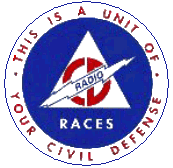Daniel Pulliam piece in the daily briefing on www.govexec.com:
A partnership between the departments of Justice and Homeland Security to create an interoperable wireless communications network for police and first responders has fallen apart and the project is imperiled, according to an audit released Monday.
The report from the Justice Department’s inspector general office stated that despite more than six years of development and $195 million in funding, the Integrated Wireless Network project “does not appear to be on the path to providing the seamless interoperable communications system that was envisioned.”
We haven’t read the Justice IG’s report yet. Disappointing news – but no surprise. More to follow.
Update: I’ve gotten about halfway through the IG’s very clear report. No less disturbing – but the obsolescence they’re talking about is principally in encryption functionality of their two-way voice communications. Question: it’s clear that the Russians were good at cryptography and steganography – is there any reason to believe that Al-Qaeda has ever used anything as sophisticated as a book code? Are they transmitting number groups via satphone?
Of course the Bureau and Marshals Service, Secret Service, DEA should have interoperable encrypted systems. But it’s not clear that it should have taken this long, not clear that this isn’t at least in part the result of long-standing institutional rivalries and inertia, not clear that it should have cost this much. This, so far, is what I take to be the import of the Inspector General’s Report.
What remains clear is that 10,000 or 20,000 fully interoperable, image-handling, encryption-updatable-on-the-fly two way radios won’t do a whole lot for first responders.
I haven’t puzzled out yet – perhaps I’m being thick – how an interoperable trunked, encrypted radio system:
- lets two Special Agents of the FBI, or any two people from the same agency talk to each other in the same neighborhood;
- what happens with the same two agents don’t have repeaters nearby and are far from their home offices;
- how two federal employees from different agencies can communicate point-to-point in the same neighborhood (or same warehouse)
More coming when we finish reading the Inspector General’s report.
What are the implications of this? Especially in places like New York, where state and local governments are also struggling with interoperability and system design issues – the clear answers are
- to support the ARES and RACES systems and
- to build local, FCC-licensed, locally-run comms nets – either on frequencies in the Business-Industrial Pool or,
- with local or state permission, on public safety frequencies.
The ideal solution would be an integrated and redundant system which uses all three of those elements.
For those of you that like illustrations with your text, we now provide the graphic portion of this post: ARES and RACES logos. 


